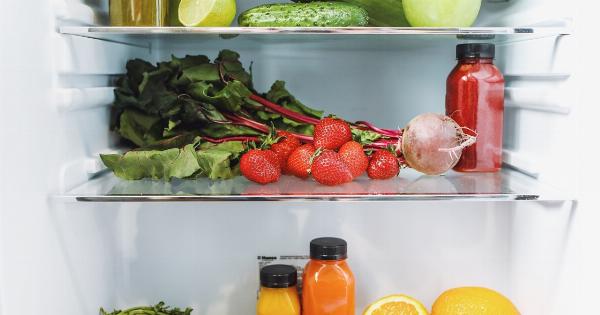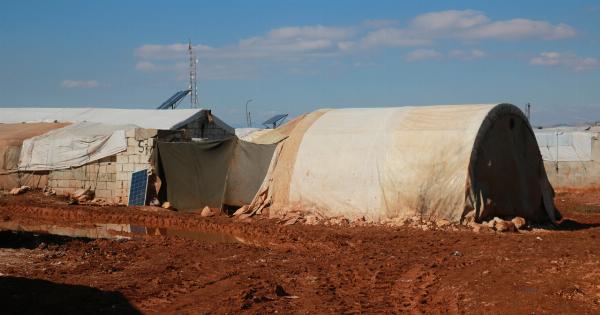In today’s fast-paced world, cooking and baking have become a daily routine for most households. While these activities bring joy and nourishment to our lives, it’s crucial to understand the environmental hazards associated with them.
From energy consumption to waste generation, our everyday cooking and baking practices can have a significant impact on the environment. In this article, we will explore some of the most common environmental hazards of everyday cooking and baking and discuss how we can make more sustainable choices in our kitchens.
1. Energy Consumption
Cooking and baking rely heavily on energy, whether it’s electricity or gas. Traditional ovens, stovetops, and other cooking appliances consume a substantial amount of energy to generate heat.
This increased energy consumption contributes to greenhouse gas emissions and the depletion of natural resources. To mitigate this hazard, opting for energy-efficient appliances like induction cooktops or convection ovens can significantly reduce energy consumption and minimize your carbon footprint.
2. Food Waste
Food waste is a significant environmental issue, and cooking and baking play a role in its generation. From vegetable peels to expired ingredients, our kitchen activities often result in substantial amounts of waste.
When this waste ends up in landfills, it decomposes and releases methane, a potent greenhouse gas. To combat this, practicing mindful meal planning, composting food scraps, and donating excess edible food can help reduce food waste and its environmental impact.
3. Water Usage
Cooking and baking involve the use of water in various ways, such as washing produce, cleaning utensils, or boiling ingredients.
The excessive use of water adds strain to freshwater sources and can contribute to water scarcity in regions already facing water stress. To conserve water in the kitchen, we can adopt practices like using a dishwasher only when fully loaded, collecting and reusing water for plants, and fixing leaks promptly.
4. Packaging Waste
The packaging of ingredients and pre-packaged goods is another environmental hazard associated with cooking and baking.
Most food items come in non-recyclable or single-use plastic packaging, which ends up in landfills, incinerators, or pollutes natural ecosystems. Opting for bulk purchases, choosing products with minimal packaging, and investing in reusable storage containers can help reduce packaging waste.
5. Deforestation
Wood is still widely used as a fuel source for cooking and baking in many parts of the world. This reliance on wood for open fires and traditional stoves contributes to deforestation, as trees are excessively cut down to meet the demand.
Deforestation not only leads to the loss of biodiversity but also releases large amounts of carbon dioxide into the atmosphere. Transitioning to cleaner cooking alternatives like electric or gas stoves can help combat deforestation and its detrimental effects.
6. Air Pollution
Traditional cooking methods, such as open fires or inefficient stoves, release harmful pollutants into the air.
These pollutants include carbon monoxide, nitrogen dioxide, and particulate matter, which can have detrimental effects on both human health and the environment. Switching to cleaner cooking technologies or using ventilation systems can significantly reduce indoor and outdoor air pollution caused by cooking and baking.
7. Chemical Pollution
Cooking and baking often involve the use of various chemicals, such as cleaning agents, pesticides, and non-stick coatings. Improper disposal of these chemicals can contaminate water bodies and soil, endangering aquatic life and impacting ecosystems.
Using natural, eco-friendly cleaning products, buying organic produce, and opting for cookware with non-toxic coatings can help minimize chemical pollution in the kitchen.
8. Carbon Footprint of Ingredients
When it comes to cooking and baking, it’s essential to consider the carbon footprint of the ingredients we use.
Certain foods, especially those that are imported or require energy-intensive production methods, contribute more to greenhouse gas emissions. Choosing locally sourced, seasonal ingredients can help reduce the carbon footprint associated with our culinary endeavors and support local farmers.
9. Proper Waste Disposal
Disposing of cooking and baking waste in an irresponsible manner can have severe environmental consequences. Fats, oils, and grease, if poured down the drain, can clog pipes and pollute water bodies.
Improper disposal of food waste can attract pests and contribute to the generation of methane in landfills. By properly managing waste through recycling, composting, and using specialized disposal methods for fats and oils, we can minimize the negative environmental impact.
10. Sustainable Cooking Practices
Adopting sustainable cooking practices is the key to mitigating the environmental hazards associated with everyday cooking and baking. Some simple steps you can take include:.
- Using energy-efficient appliances
- Practicing portion control to reduce food waste
- Choosing reusable and eco-friendly kitchen utensils
- Opting for eco-friendly cleaning products
- Supporting local and sustainable food producers
- Using alternative cooking methods like microwaving or pressure cooking
By incorporating these practices into our cooking routines, we can significantly reduce the environmental impact of our culinary activities and contribute to a more sustainable future.



























